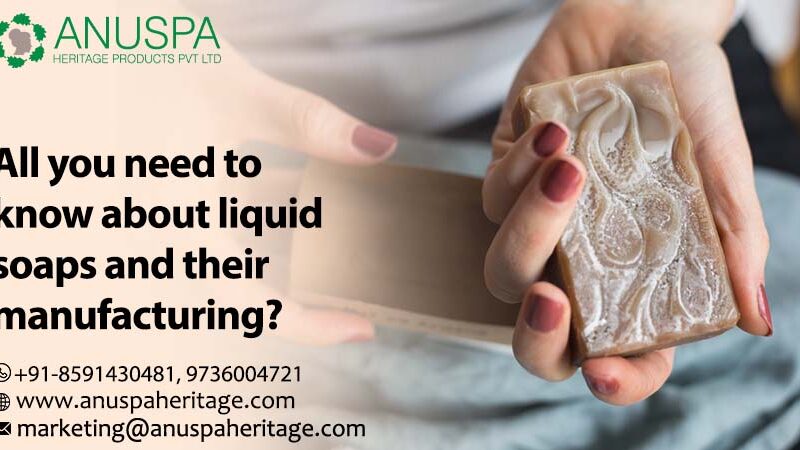
Liquid soaps are efficient and effective means of washing hands, bathing, and cleaning, they have become an integral part of every household’s daily washing needs. From the home, workplace, and places of entertainment, liquid soaps are everywhere.
With the growing need for liquid soap, there are now many types manufactured for various skin types, scents, and other uses. You could be using liquid soap to kill off germs or nourish your skin. It is good to understand how exactly these soaps are made and what makes these soaps safer on the skin and beneficial. Understanding their manufacturing processes helps in making responsible decisions for a consumer, retailer, or even someone who would like to enter into the business of making liquid soaps.
In this blog, we are going to learn all the important knowledge related to liquid soaps and their manufacturing.
Origin of Liquid Soaps
They made their entry into the market in the last quarter of the 19th century as a more practical choice over solid soap bars. The first recorded patent for liquid soap was filed in 1865 by William Sheppard. He claimed to have invented an easier-to-apply form of soap that was more efficient when used on specific cleaning jobs.
Most people only began using liquid soap in the 20th century. This trend continued largely due to the increasing need for better hand-washing methods. As public awareness regarding germs increased, particularly in healthcare and food handling environments, liquid soap became increasingly preferred due to its convenience and lower chances of cross-contamination than bar soap.
Why are They Preferred?
- Suitable and user-friendly: Nonmessy and quick application.
- Clean: Less cross-infection risk than bar soap.
- Gentle to the skin: Generally, to help protect the skin, moisturizers are included.
- All-rounder: Comes in different variations that include antibacterial and different types of fragrance, etc.
What goes into the Manufacturing of Liquid Soaps?
Such ingredients are blended in a controlled environment to provide liquid soap that is well-balanced, effective, and safe according to the industry requirements.
Water: This is the main solvent in liquid soap formulations, it dissolves all other components and acts as a base for the soap. This ensures that the finished product will be of right density and is easy to use.
Surfactants: They dissolve oils, dirt and grease by allowing them to be washed away, also make bubbles, which improve the cleaning process.
Oils or Fats: Commonly used are high-quality vegetable oils such as coconut oil, olive oil or palm oil. These oils do not only enhance foam formation but also contribute moisturizing and softening effects on the skin.
Emulsifiers: These are the constituents that stabilize the mixture and prevent separation between and among oil and water to maintain the texture of soap.
Preservatives: Most of the liquid soaps contain preservatives, so that bacterial and mold’s growth can be avoided. This provides the safety of using the soap for a longer time.
Fragrances and Essential Oils: These are the ingredients responsible for the scent of liquid soaps. Synthetic and some natural like lavender, eucalyptus and citrus essential oils are used to enhance the feeling according to the intended scent.
Colorants: Such additives as dyes or natural plant extracts are usually used to decorate the soap. This is important to improve the consumers’ acceptability of the product, making it more appealing.
PH Stabilizers: Some substances are added to the liquid soap for ph adjustment. This is important in ensuring that mild soaps are produced that do not cause any irritation to users, especially those with sensitive skin.
Thickening Agents: This guarantees that the soap is quite thick when dispensed and allows it to be applied and does not overflow.
Conclusion
If you are looking for Liquid Soap Manufacturers in India to work with, Anuspa Heritage specializes in manufacturing all types of soaps available in the market. Proudly we can say we are the largest manufacturer of 5.5pH soaps. Since our establishment, the Company has grown steadily, adding new clients to our portfolio and increasing its capabilities with modern infrastructure


Recent Comments